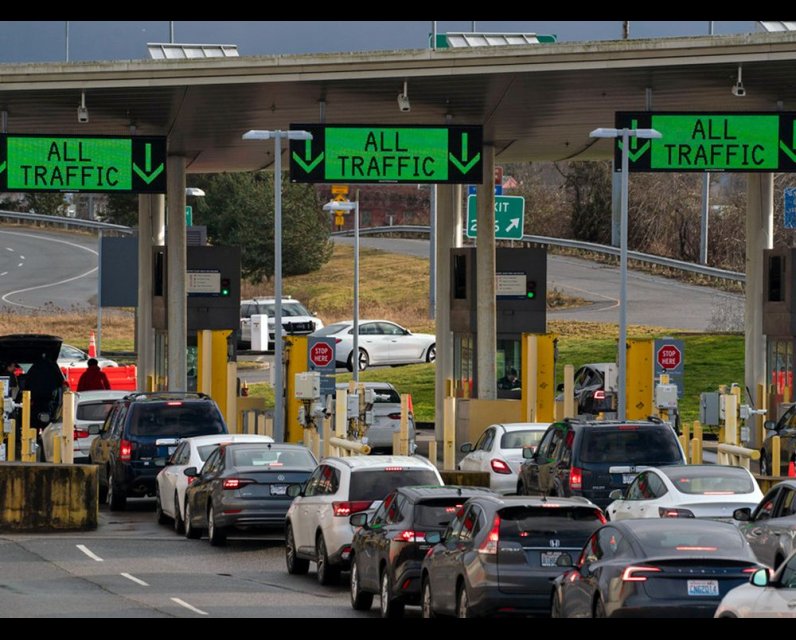Source Feed: National Post
Author: Ari David Blaff
Publication Date: July 12, 2025 - 06:00
Contrary to Trump's claims, Canadian border is not major source of fentanyl, U.S. report says
July 12, 2025

Most of the fentanyl entering the United States continues to come from the southern border, not the northern one, according to a recent report by an American think-tank, despite President Donald Trump’s statement on Thursday that Canadian authorities have failed “to stop the drugs from pouring into our country.”
“Countering supply effectively depends on understanding what the dominant drug-trafficking routes are,” says the report by the Manhattan Institute, which was published July 1. “New data on fentanyl seizures presented here largely reinforce previous understanding that most IMF (illegally manufactured fentanyl) enters the U.S. from the south. These data call into question tariffs and other policies and policy justifications that treat the threat from the northern border as comparably severe.”
Donald J. Trump Truth Social 07.10.25 08:15 PM EST pic.twitter.com/33y4kfJlPl— Commentary Donald J. Trump Posts From Truth Social (@TrumpDailyPosts) July 11, 2025The report used new data regarding fentanyl seizures, which challenges public pronouncements made by Trump and the White House about the threats posed by the Canadian border. Authors Jon Caulkins and Bishu Giri write that such concerns are largely overstated and could even undermine America’s ability to prioritize tightening the country’s border with Mexico. The report looked at “large” seizures of fentanyl — defined as over a kilogram of powder or more than 1,000 pills — that would suggest wholesale trafficking as opposed to smuggling for personal use. It found that officials made more large seizures in U.S. counties along the northern and southern borders when compared to the rest of the country. However, far more seizures were made in the south. “Counties along the Mexican border account for only 2.35 per cent of the U.S. population; but in 2023–24, they hosted about 40 per cent of the nationwide quantity of fentanyl appearing in large seizures, for both powder and pills,” says the executive summary of the Manhattan Institute’s report . “By contrast, counties in the lower 48 states that border Canada account for 3.1 per cent of the U.S. population but only 1.2 per cent of the powder and just 0.5 per cent of the pills obtained in large seizures.” Caulkins, the H. Guyford Stever University professor of operations research and public policy at Carnegie Mellon University’s Heinz College in Pittsburgh, told National Post that his findings are “not terribly complicated or subtle.” He said that cross-border drug flows often mirror where seizures occur, and the data point to an uncontroversial finding. “The basic punch line of this study is that seizures of fentanyl in the United States are disproportionately at borders: no surprise. It’s mostly produced internationally and then shipped in. But the vast majority of that is on the borders of Mexico, not on the borders with Canada.” When asked whether he was surprised by his findings, Caulkins, who has been a drug police researcher for over three decades, laughed and said he wasn’t. “It’s what I expected.” One thing that did strike him as overlooked was drug smuggling into Alaska, which he hadn’t contemplated deeply before. The report found that certain counties in Alaska could be portals from Canada to the broader Alaska market, “although those quantities are much too small to be of consequence beyond Alaska.” There were 26 seizures in Alaska counties that border Canada — “triple what would be expected based on those counties’ population” but still small when compared to the rest of the Alaska market. “Maybe Alaska does get its fentanyl from Canada, because there’s not necessarily a large presence of Mexican drug trafficking organizations in Alaska, and you can’t easily drive from Mexico to Alaska without crossing several international borders,” he said. “I didn’t know that was coming, and by all means, maybe U.S. and Canadian authorities can put a few more inspectors on those ferries or whatever. But that’s not going to move the needle for the country, but it might be useful, right locally.” President Trump has frequently cited the weakness of the nearly 10,000-kilometre long U.S.-Canada border as a threat to national security and a vulnerability that cartels and smugglers actively exploit. “Gang members, smugglers, human traffickers, and illicit drugs of all kinds have poured across our borders and into our communities,” Trump wrote in a public statement released on February 1, just weeks after returning to the White House. He framed the crisis as having “profound consequences on our Nation, endangering lives and putting a severe strain on our health-care system, public services, and communities.” “Canada has played a central role in these challenges, including by failing to devote sufficient attention and resources or meaningfully coordinate with United States law enforcement partners to effectively stem the tide of illicit drugs,” Trump said in February. Two days after Trump’s message, then prime minister Justin Trudeau announced the implementation of a new “$1.3 billion border plan — reinforcing the border with new choppers, technology and personnel, enhanced coordination with our American partners, and increased resources to stop the flow of fentanyl.”
I just had a good call with President Trump. Canada is implementing our $1.3 billion border plan — reinforcing the border with new choppers, technology and personnel, enhanced coordination with our American partners, and increased resources to stop the flow of fentanyl. Nearly…— Justin Trudeau (@JustinTrudeau) February 3, 2025Prime Minister Mark Carney dismissed Trump’s claims of a porous Canadian border posing a threat to American national security in a social media message responding to the U.S. president on Thursday night. “Canada has made vital progress to stop the scourge of fentanyl in North America,” the prime minister wrote . “We are committed to continuing to work with the United States to save lives and protect communities in both our countries.” The Manhattan Institute report concluded that it would likely be more useful for the United States to direct more of its focus to the southern border if it wants to reduce the flow of fentanyl. “Counties along the Canadian border are not an important part of this story,” the report states. “Whatever the merits or drawbacks of tariffs on imports from Canada — a question of economics and international relations that goes far beyond our analysis — such actions cannot be justified as part of a pragmatic and data-informed response to the threat of fentanyl to the United States.”
Throughout the current trade negotiations with the United States, the Canadian government has steadfastly defended our workers and businesses. We will continue to do so as we work towards the revised deadline of August 1. Canada has made vital progress to stop the scourge…— Mark Carney (@MarkJCarney) July 11, 2025Our website is the place for the latest breaking news, exclusive scoops, longreads and provocative commentary. Please bookmark nationalpost.com and sign up for our newsletters here.
Government documents suggest purchasing a fleet of aerial combat drones that could fly alongside fighter jets could cost as much as $16 billion and would require hundreds of staff.
July 12, 2025 - 11:45 | Globalnews Digital | Global News - Canada
The private college received a letter from the Ministry of Higher Education at the end of June saying it owed $21,113,864 for enrolling 1,066 students over its quota for English-language programs. That fine is added to a pre-existing one for the same infraction, the year before.
July 12, 2025 - 10:51 | | CBC News - Canada
Coldplay frontman Chris Martin says he didn't mean to insult Toronto's newest concert venue when he called it a "weird stadium in the middle of nowhere."
July 12, 2025 - 10:29 | | CBC News - Canada




Comments
Be the first to comment